In between working on the hatch, I've been experimenting with ideas for the dresser frame and doors. The shelves look like this:
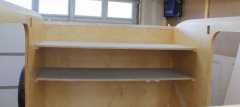
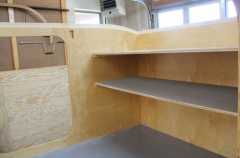
They are made out of a sandwich of 1/8" and 1/4" Baltic birch scrap around 1/4" AC plywood. I left a quarter inch lip on the front, with the thought that I may try and attach a frame that way. (Or, if not, worst case, I could cut the lip off.)
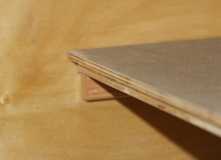
With the frame attached that way, it would add to the rigidity of the shelves.
Shelly originally wanted doors that opened up, but I thought that was a recipe for a bonked nose, and said I wanted sliding doors. She doesn't like those because she can only get to half her wardrobe at once, but I assured her she'll be able take the doors off as easily as she'll be able to slide them.
The idea will be to cut 3/16" wide notches for doors made of 1/8" Baltic birch scrap. The notches will be 1/8" deep at the bottom and 3/16" deep at the top, so one could lift a door and ease it out.
So I experimented with making notches for sliding doors using a spiral upcut bit with the router in the table. Quickly realized I'd need thicker material than 3/4"
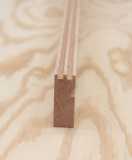
That's an example of 3/16" inch notches, 3/16" deep. Leaves a little less than 1/8" of material on the edges and between the notches: Not enough! (The quarter inch notch in the side would slip into the 1/4" lip in a shelf.)
Incidentally, I chose oak because pine or cedar would, I believe, be too warpy and also would tend to splinter as I notched them. Without a special trip to a real lumber yard (and not the chain lumberyard in Edgewood) my hardwood choices are oak and poplar.
Okay, so we can buy 1 1/2" by 1 1/2" inch oak in three foot long pieces, but it's really 3/4" stock glued together. I can do that too, and get widths larger than 1 1/2 inches. So I did.
Here is what the frame looks like

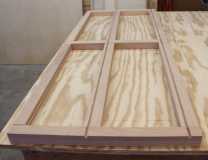
Once I square it up and join it, I will probably have to widen the quarter inch notches to fit the shelves. (Too many degrees of freedom to manage for this beginner!) I'll use PL Premium to glue to the shelves since it should expand to fill the imperfect fit. I'll also use some blocks and screws to help hold the frame to the shelves and cabin walls.
So, how to join? The pieces are too narrow for biscuits. (I didn't want to make them too wide, since the shelves are already deep for the size apertures we'll have.) Kreg poke-jiggery joints look fine, but the pieces are really too narrow for two Kreg screws as well. Worked great on some wider scrap though
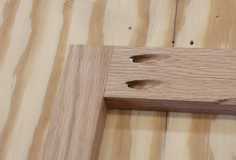
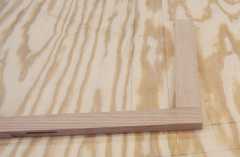
One thing though: The oak splits if you try and use a Kreg self tapping screw. The solution is to carefully drill through the Kreg jig hole into the second piece.
So, I started to think about using dowls, when I remembered Shelly's Dad, before passing away, gave us a dowling jig he'd bought, for some reason, and never used.
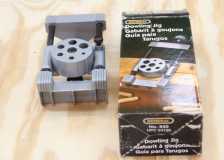
I experimented, and discovered it is junk!
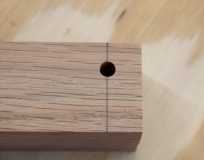
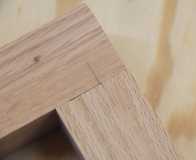
The problem here is due to that cast alignment sight. From where I read center, it is about 1/32" off, which doubles when aligning the pieces. Reading on-line reviews, I found other problems with stability, etc. with this jig that I'd also sort of noticed. So I decided to buy a better jig
https://www.rockler.com/self-centering- ... gJGA_D_BwEIt should be here next week, and I'll see if I can make it work well enough. Assuming we can live with the results, I'll use a 1/8" roundover bit on the exposed sharp edges of the frame, attach it, and use some trim to hide the imperfect fit around the cabin walls and ceiling. Since we'll want to wax the insides of the notches anyway (or Shelly really will be able to remove the doors as easily as sliding them), I'm thinking of simply waxing the entire frame, rather than varnishing.
If we like the result, we'll probably do something similar in the galley.
Tom

 I hope so!
I hope so! 



 I'll report on the results in a few weeks.
I'll report on the results in a few weeks.

